The P-8A programme continues to hum along. The US Navy, the primary customer for the aircraft, currently has a requirement for 117 P-8As.
Douglas Royce is a Military Aircraft Analyst at Forcast International. Forecast International is a major provider of ‘Market Intelligence and Consulting in the areas of aerospace, defence, power systems and military electronics’.
“We expect the service to procure the remaining 6 aircraft during FY20. With production following procurement by about two years, Boeing is forecast to deliver the 117th Navy P-8A in 2022. We expect Congress to extend P-8A procurement in FY21-FY23, adding about 21 aircraft to the current total requirement. However, this portion of the forecast is speculative.
On the export front, Boeing initially delivered eight P-8Is to India during 2012-2015. Boeing scored a follow-on order for four more aircraft in July 2016. The Indian government is expected to order ten more aircraft in the near term.
Australia initially ordered eight P-8As under the U.S. Foreign Military Sales program to replace its small fleet of Lockheed AP-3Cs. Deliveries began in early 2017. Australia exercised options to order another four aircraft through the USN’s FRP IV procurement in March 2017.While total RAAF procurement is likely to remain at 12 aircraft, the service may order another three aircraft. By September 2019, Boeing had officially delivered 12 P-8As to the RAAF, though the final two aircraft will undertake verification and validation flights in the United States before flying to Australia in January 2020.”
The forecast includes a generic line for export production starting in 2019. This line includes the production for the United Kingdom, which signed a contract covering nine aircraft for the RAF under the U.S. FMS program in July 2016. The first aircraft will be delivered in 2019.
“Norway is another customer this line covers. In March 2017, the Norwegian Ministry of Defense announced it had signed a contract covering five aircraft. Deliveries will run from 2021 through 2022. In July 2018, New Zealand announced plans to order four P-8As through the FMS program. The procurement of these aircraft is expected as part of the Pentagon’s FY20 budget. Deliveries are to begin in 2023. South Korea selected the P-8A in June 2018 to fill what is expected to be a six-aircraft requirement for new maritime patrol aircraft to complement the country’s existing fleet of 16 Lockheed Martin P-3 Orion MPAs. We believe this selection will result in a firm order.”
Overall, the potential size of the P-8A export market is not large. The P-8A is a far more expensive option than maritime patrol versions of military transports and commuter aircraft, but it offers a higher level of capability than those converted aircraft.


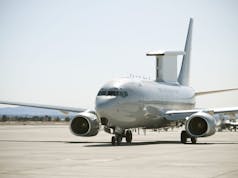
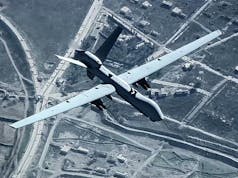
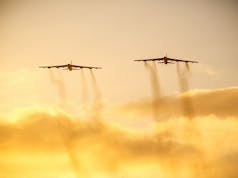
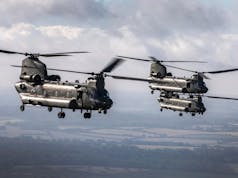
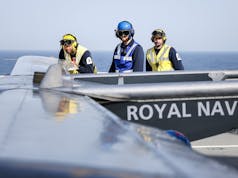
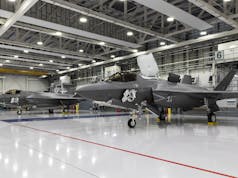
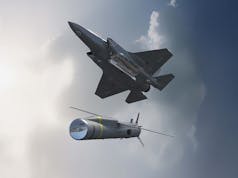

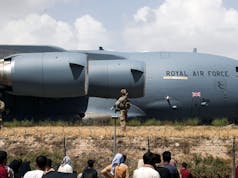


Please Sir, can we have a few more?
Oh yes please. When the Nimrod MRA4 contract was first let, aeons ago, I seem to remember that the requirement was for 22 aircraft. The world now is a much more threatening place. I know that the P8 is a very good aircraft, but it can still only be in one place at a time.
Might be wrong as it was a long time ago, but I think the order went from 22 to 18 ( or 16 ? ) then 12, then 9.
You might describe that as a series of cuts, as I would. To a politician it is an increase in capability!
It is interesting in the forecast that most customers, including the USN are looking for more aircraft. No mention of UK, we will probably look to place an order about a week after the production line closes. Forgive me for being cynical.
Maybe relying on co operation with Norway for our patch?
Does not help much further afield.
The reason politicians fail to invest in the Military is because a future politician will claim the credit. Where we get a good product we need to reference it back to the brave sole who put his neck on the line. At the same time that we highlight the failings of those who sat on their hands when they could have done more.
Ah yes. And who was it who chose to update Nimrods rather than buy new I wonder?
On their own initiative or on the Air Staffs advice?
A common trend, failure gets rewarded or excused away.
thus it has always been however that is no excuse to allow it to continue….
I didn’t realise the Nimrod MR4 was cut quite that much before it was finally axed altogether. Wow! Seems that it overran so much, it would have actually been cheaper to build all new Nimrod planes instead of upgrading the older ones.
Let’s wait for the B model.
Vertical take-off?
While I’d love another batch of 9 or so P8’s, I’d be willing to compromise and go all ‘T31’ and get more ‘lesser’ MPA’s, its nuts that a maritime nation has gone so long without.
What worries me is the rising number of 737NGs showing structural faults at the wing pickle forks. I’d hope that as they will be spending a large amount of time in the low altitude envelope that the wing roots have been upgraded but my faith in Boeing is eroding
I think you will find that most if not all the faults are in high time/high cycle aircraft, like over 20,000 hours and about the same number of landings and takeoffs. And it is a routine maintenance inspection that finds faults like that. P8’s will generally not put in nearly as many hours as a short haul 737, and certainly not as many cycles.
So here’s a thought. Could the MOD get some more P8’s by buying up low hours 737 ng’s and fitting the mission system to them, in the same way as I believe they are intending to do with two Wedgetails?
They are relatively high cycle aircraft but Boeing’s initial response of poor maintenance on the African carriers(can’t remember the airline) plane has shown to be incorrect. Followed by Qantas, southwest and Ryanair finding the same issue, it’s also an embedded structural part so pretty much impossible to repair without disassembly of the airframe. They won’t put in the cycles but they will operate prodominently at low altitude which generally increases turbulence and lifetime wing stresses.
What really worries me is Boeing’s attitude of denying issues until the evidence proves they’re wrong 1 of which they admit they knew about, which to me suggests that the correct/safest manufacturers operating instructions are not in front of the pilots comercial and military alike.
Regards to your idea I think it’s fine to modify existing NGs for wedgetail but doesn’t Poseidon’s weapons bay require building in at initial production. Might be wrong.
Interesting point here, if this fault is showing up in several carriers aircraft it begs the question, should this have shown up when the fatigue test airframe was under test? If it didn’t then the testing regime needs looking at. If it did, could it be that this fact was concealed from the licensing authorities? I do hope not, but unfortunately Boeing has been shown to have form in this area, with tragic outcomes.
I have no idea about the P8 weapon bay, if it is an easy mod to make then it could be a cost effective way forward.
Do modern airframes get a fatigue test airframe tested to destruction, or is it all done on computers now adays?
I think it’s fairly uncommon for such extensive structural testing to be done these days, and therefore I doubt Boeing knew about it (though they may have suspected it).
The important thing is that it was discovered during routine maintenance, and therefore can be monitored to see how they develop over time.
It’s unlikely it’ll turn out to be a catastrophic issue, and it’ll likely be remedied by putting more emphasis on checking for fatigue during maintenance.
IIRC the P-8 has a different wing to the NG anyway.
Nick C,
It is not practical, or cost effective, for the UK MoD to procure low mileage 737-800NGs to attempt to convert into a P-8A, just won’t work, the P-8A and E-7A are two different animals.
The E-7A (and for example a KC-30A/A330MRTT too) are produced by taking a ‘standard’ build green airframe from their original commercial production line, they are then taken to a separate facility where they are stripped down to bare bones, converted and rebuilt.
The P-8A is purpose built from day one (an in-line production process, same as their commercial B737 cousins), the heavily modified and strengthened fuselage and wings, and all of the other relevant components. All the bits start at one end of the production line and at the other end out pops a completed P-8A, and from what I understand various mission systems are installed later, non airframe mods.
Efficient, simple and cost effective, your suggestion would require a whole new manufacturing (re-manufacturing) process to be created, at what cost??
If the UK and all of the other users, and potential users, wish to acquire additional P-8As then they better get their order in soon or it will be too late.
Cheers,
Nick C, regarding the modifying of standard airframes, looking at the 737 drawings online the ‘weapons Bay Area’ On a normal airframe has a fair amount of support structure for the rear of the wing assembly so would be a huge undertaking to modify as John N suggests. I don’t think they do destroy airframes in fatigue testing anymore a lot of the testing is now based more on the individual components. With regard to the Boeing/FAA testing regimes, I looked in to it a lot after the MAX crashes and it does appear that after the 737-600 was approved initially Boeing were almost given a green light with the rest of the NG series up to the 800, when the 800 was approved the same happened again with minimal FAA input in the 900 and 900ER. We all know they messed up with the MAX by trying to keep the retraining costs down as they had managed perfectly between the 800 and 900 models but the MAX was to big of a change. I know a pilot who had completed the first part of transition to the MAX when it was grounded, he had not been informed of the extent that MCAS could ‘take control’ and that it could.
I hope that lessons have been learnt I really do.
Also I hope this isn’t seen as Boeing bashing as they are a fantastic manufacturer and should be recognised as such but IMO they have to re-earn their stripes.
Thanks for all the input on this one, I now know a lot more about how aircraft are built! And I agree that Boeing May have a lot of fingers in a lot of pies, but they have a way to go to restore confidence, particularly in the civilian world.
And we still need a lot more P8’s, another 5 would be good, 9 or more even better. But we could go on wishing. Now to read the take on all the lies in the manifestos. Sigh.